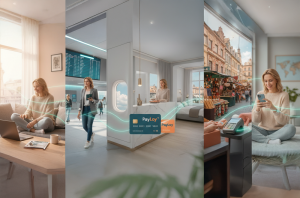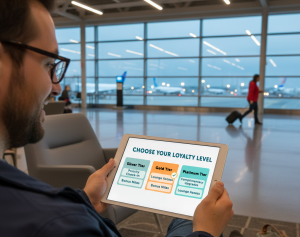Best Practices for Implementing Loyalty Programs
Loyalty programs have become essential for businesses looking to increase customer retention and maximize Customer Lifetime Value (CLV). In the competitive retail and eCommerce landscape, attracting customers is only half the battle—keeping them engaged and encouraging repeat purchases is where true success lies.
However, many businesses struggle with lacking a structured way to reward customer loyalty or maintain direct communication with their audience. A well-crafted loyalty program solves both challenges, providing customers with incentives to stay engaged while giving brands valuable insights into shopping behaviors. But designing a program that truly drives long-term loyalty requires a strategic approach, thoughtful incentives, and continuous optimization.
This guide explores the best practices for creating a successful loyalty program that enhances customer relationships and delivers measurable business results.
Work Before You Start with the Design
Before diving into the mechanics of a loyalty program, it’s crucial to understand your audience and define clear objectives.
Successful programs are built on data. Analyzing purchase history, shopping behavior, and customer demographics helps businesses identify who their most valuable customers are and what motivates them. Segmentation allows for tailored rewards and communication, making the program more relevant and effective.
Once the audience is clear, the next step is defining what success looks like. A loyalty program should align with broader business objectives, such as increasing repeat purchases, boosting average order value, or enhancing customer retention. Setting measurable KPIs—like participation rates, redemption rates, and overall sales impact—ensures that the program is continuously optimized for success.
Designing an Effective Loyalty Program
- Points-based programs – Customers earn points for purchases and activities, redeeming them for discounts or rewards. This model works well for frequent transactions and encourages ongoing engagement.
- Tiered programs – Members unlock greater benefits as they reach higher spending levels. This structure fosters long-term commitment and creates a sense of exclusivity.
- Subscription-based or paid loyalty programs – Customers pay a recurring fee to access special perks, such as free shipping, early access to sales, or exclusive discounts. This model works well when the perceived value outweighs the cost of membership.
- Gamified programs – By incorporating challenges, achievements, and interactive elements, businesses make the loyalty experience more engaging. Customers may complete tasks, participate in contests, or unlock rewards through milestones.
- Lifestyle programs – These extend beyond transactional rewards, offering benefits that align with customers’ values and daily lives. Examples include sustainability rewards for eco-friendly purchases or wellness perks for health-conscious shoppers.
While choosing the right format is essential, the true success of a loyalty program lies in its rewards. Incentives should feel both attainable and worthwhile. A balance of short-term rewards (like instant discounts) and long-term benefits (such as VIP status or exclusive events) ensures customers stay engaged over time.
Additionally, the program must be easy to use. A complicated sign-up process can deter potential participants, and restrictive redemption rules can frustrate existing members. The best loyalty programs are seamless, intuitive, and accessible across multiple platforms, including websites, mobile apps, and in-store.
Promoting Your Loyalty Program
Even the most well-designed loyalty program needs strong promotion to maximize participation. Customers need to understand its value, how it works, and why they should join. A multi-channel approach ensures the message reaches the right audience.
Key strategies for promoting your loyalty program:
- Email marketing – Send personalized emails highlighting program benefits, reward opportunities, and exclusive offers.
- Social media campaigns – Engage customers through interactive content, user-generated testimonials, and limited-time promotions.
- Website and checkout integration – Promote sign-ups directly on the homepage, product pages, and during the checkout process.
- In-store promotions – If applicable, train staff to introduce the program and help customers enroll on the spot.
- Influencer and brand partnerships – Collaborate with industry influencers to showcase the benefits and credibility of your loyalty program.
Promotion shouldn’t stop at sign-up. Ongoing engagement is key to keeping members active. Sending reminders about expiring points, new rewards, and exclusive opportunities encourages continued participation. Additionally, personalized reward suggestions based on past purchases make customers feel valued and understood.
Monitoring and Optimizing Your Program
A successful loyalty program is not static—it requires continuous evaluation and refinement to keep customers engaged and ensure long-term effectiveness.
Key performance metrics should be tracked regularly to measure impact. If participation rates are high but redemption rates are low, it may indicate that rewards are not appealing enough. If engagement drops after an initial sign-up boost, the program may need better ongoing incentives or communication.
Customer feedback is also a valuable tool for optimization. Surveys, reviews, and direct input from members help identify pain points and opportunities for improvement. Making data-driven adjustments, such as tweaking reward structures, simplifying redemption processes, or launching seasonal bonus offers, keeps the program fresh and engaging.
Conclusion
A well-executed loyalty program does more than incentivize purchases—it strengthens customer relationships, fosters long-term brand loyalty, and increases Customer Lifetime Value (CLV). By understanding your audience, defining clear goals, creating a detailed plan, choosing the right structure, and continuously optimizing the program, businesses can create a loyalty strategy that delivers real impact. At LPS, we go beyond offering loyalty solutions—we actively run our own programs across multiple markets, giving us a unique perspective on what truly works. Whether you’re launching a new loyalty initiative or enhancing an existing program, our expertise can help you achieve measurable success.






